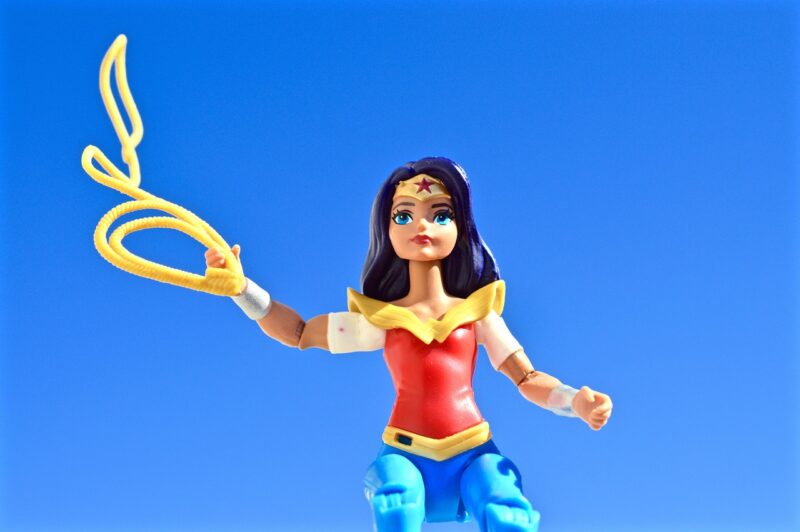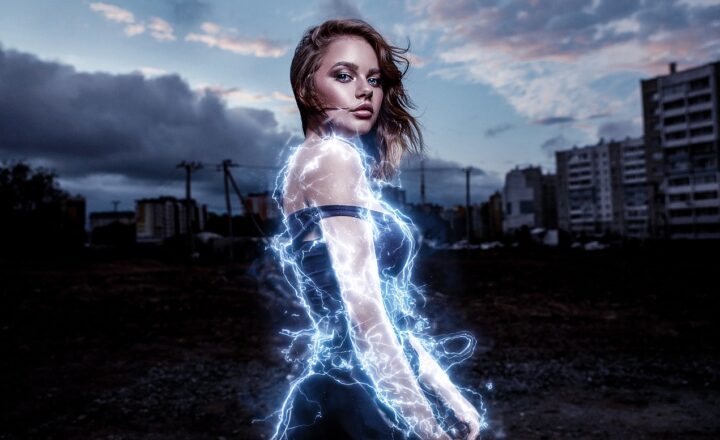The Evolution of Female Superheroes: From Damsels in Distress to Icons of Strength and Independence
November 14, 2024

Female superheroes have undergone a remarkable transformation since their inception. In the early days of comic books, female characters often lacked depth, frequently relegated to the roles of damsels in distress or sidekicks to their male counterparts. However, as society’s views on gender roles and equality evolved, so too did the representation of women in superhero narratives. Today, female superheroes embody strength, independence, and resilience, inspiring women and girls around the world to embrace their power.
1. Early Representation: The Damsels in Distress
The earliest female superheroes often mirrored the limited roles assigned to women in society. Characters like Wonder Woman, created in 1941, brought a breath of fresh air, yet even she was sometimes portrayed as a supporting character in her own tales. Typically, these early narratives revolved around male heroes who rescued women from perilous situations, reinforcing traditional gender roles.
Characters like Lois Lane, while portrayed as resourceful and intelligent, still predominantly played the part of the romantic interest or the victim who required saving. This portrayal not only limited the potential of female characters but also failed to reflect the real capabilities and contributions of women in society.
2. The Turning Point: Feminism and Social Change
The feminist movements of the 1960s and 1970s had a significant impact on the depiction of female superheroes. As women fought for equal rights, representation in media began to change. Superheroes like Black Widow and She-Hulk emerged, bringing a more nuanced representation of women who were independent, powerful, and complex.
In the 1980s, comic books started to depict women not only as victims but as warriors. Their stories began to explore a range of themes including empowerment, resilience, and the fight against oppression. Female superheroes were no longer defined merely by their relationships with male characters; instead, they began to occupy spaces where they could demonstrate their strength and character in their own narratives.
3. The Modern Era: Icons of Strength and Independence
In the 2000s and beyond, we have seen an explosion in the popularity and depth of female superheroes. Today, characters like Captain Marvel, Wonder Woman, and Black Panther (Shuri) are portrayed as multi-dimensional individuals with their own stories, struggles, and victories.
With the success of films like “Wonder Woman” (2017) and “Captain Marvel” (2019), it has become clear that female superheroes resonate with audiences. These characters are not only physically powerful but also embody qualities such as intelligence, compassion, and ethical integrity. They have become role models for young audiences, showing that strength does not come solely from physical prowess but also from courage, intelligence, and perseverance.
Moreover, many modern-day comics and films have begun to challenge stereotypes surrounding diet, appearance, and roles of women. The focus has shifted towards creating well-rounded female heroes who face real-world issues, including identity, trauma, and societal expectations.
4. Cultural Influence and Representation
The evolution of female superheroes also reflects societal values regarding diversity and representation. Today, we see an increasing number of superhero characters from different cultural and racial backgrounds, breaking away from the one-dimensional portrayals of female heroes from earlier decades. Characters like Kamala Khan (Ms. Marvel), a Pakistani-American teen, and Zatanna, who represents magic and mysticism, have enriched the superhero genre by making it more inclusive and diverse.
This not only empowers various communities but also allows different voices and perspectives to be heard within the media. Female superheroes have become symbols of empowerment across diverse backgrounds, challenging societal norms and inspiring countless fans around the globe.
5. The Role of Media in Shaping Perceptions
With the rise of streaming services and the increasing popularity of graphic novels, the portrayal of female superheroes continues to evolve. These platforms enable more creators to tell diverse stories that highlight the strength and complexity of female characters. Shows like “Jessica Jones” and “The Umbrella Academy” place women in roles that challenge the norms of traditional superhero narratives, providing them with depth and dimensionality.
Additionally, the rise of social media has given fans a platform to share their criticisms and praises of female representation in superhero narratives, increasing accountability among creators. As audiences express their desire for nuanced characters and feminist narratives, this demand is shaping the future of female superheroes.
Conclusion: The Future of Female Superheroes
The evolution of female superheroes from damsels in distress to icons of strength and independence represents a significant cultural shift. As we continue to navigate discussions around gender roles and representation, it is crucial that we support and promote storytelling that empowers women.
The journey of female superheroes is far from over. We can expect to see even more complex and powerful female characters in comics and films, reflecting the ongoing fight for gender equality and representation. With each new story, these characters inspire girls and women everywhere to embrace their strength and pursue their dreams, making a bold statement that female heroes are not only necessary but essential in the world of storytelling today.






